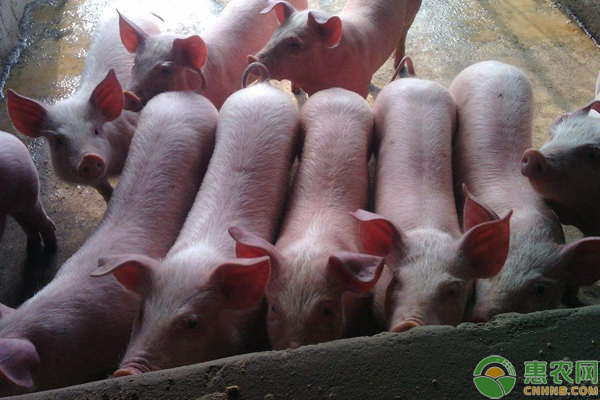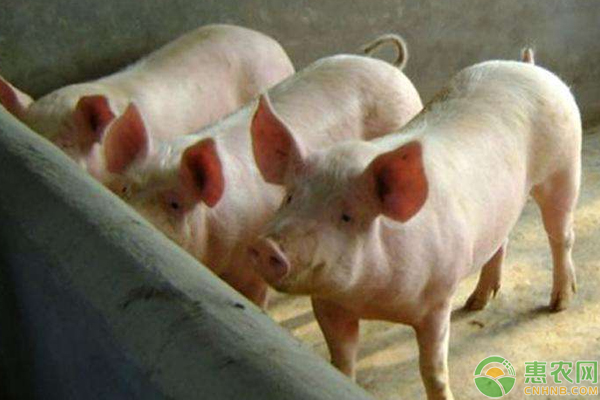In rural areas, farmers will feed a pig every year to make pigs. The cost of self-cultivation for pigs is high. Generally, everyone will choose to buy piglets. So how do you buy piglets? The following small series will tell you in detail about the feeding management and precautions of the newly purchased piglets. First, the choice of new purchase piglets When selecting piglets, introduce the piglets into the observation room and carefully observe the pig's condition and growth. Mental state Healthy piglets are lively and active, looking up at the four sides, walking steady and cheerful, when someone is standing still, the piglets will then go forward to visit. 2. Ear and nose The roots of the piglets should be hard, the ears should be thin, the eyes should be large and the eyelashes should be short, and the eyes should be clean and free of foreign matter; the mouth should be axe-shaped, indicating that the feed intake of the piglets is large; the nostrils are large and moist, indicating that the piglets have large lung capacity; The tail sways continuously during eating, indicating that the piglets have a strong appetite. 3. Coat Healthy piglets hair soft, shiny, glossy, ruddy complexion; if the skin is pale, hair loose disorder, compared with healthy piglets. Pig hoof The trotters are required to be stout, erect, straight, and as big as the legs and joints. 5. chest and abdomen Healthy piglets have no erythema and bleeding points on the chest and abdomen, and the abdominal circumference is full and not swollen; sick pigs tend to have full abdominal disintegration or depression, no umbilical hernia and scrotal hernia. 6. Feces Healthy piglets have normal color and shape; stools are thin, dry or hard, or colors are not normal. 7. Uniformity Observing the uniformity of the development of the pigs, the piglets purchased in the same batch require the age, weight and development degree to be similar; if the growth of the purchased piglets is inconsistent, it is not suitable for uniform feeding management. Second, the feeding management of newly purchased piglets Feed and feeding Newly purchased piglets should not be fed immediately. They should first drink clean warm water at around 20 °C, add 0.1% vitamins to the water, and feed the feed after 2 hours. This will resist the pig's stress and enhance immunity in the body. Newly purchased piglets should use feeds with comprehensive nutrition and good digestion performance. They can be made of high-grade concentrates, such as baby feed for pigs, which are made of high-quality raw materials, fortified vitamins, micro-ecological preparations and immunologically active substances. Improve immunity, promote digestive system development, and prevent respiratory and digestive diseases. 2. Grouping and stocking density Piglets are grouped together and generally belong to a group of similar weights to avoid excessive weight differences and cause bullying and bullying. The breeding density of pigs is preferably 1 m 2 per head, and 8 to 10 piglets are kept in each column. Have enough feeding troughs and sinks in the house, or use free feeding troughs and drinking fountains. 3. Environmental conditions To create a warm, dry, clean, hygienic and comfortable living environment for newly purchased piglets. Adjust the temperature inside the house, keep it clean and hygienic, do a good job of ventilation, improve the air quality inside the house, and reduce the concentration of ammonia. Third, the immunization and health care of newly purchased piglets Prevent disease Newly purchased piglets may be mixed with undetected sick pigs or infected with diseases during transportation. Therefore, after the piglets are introduced into the new field, they need to add high-efficiency antibiotics such as oxytetracycline to the feed for 1 week, which can effectively prevent and treat the respiratory tract. And the occurrence of digestive tract diseases. 2. Deworming When the piglet weighs about 40 kg, it will be dewormed. The anthelmintic can be used with ivermectin. The dosage is 0.2 mg/kg. It can be used once every 1 week to completely kill the parasites and insects inside and outside the pig. egg. 3. Immunize on time In order to avoid the stress response, the newly purchased piglets must start immunization one week after entering the farm. The procedure can be carried out according to the immunization procedure of the introduced farm. Generally, the swine fever is immunized in the first week, and the immunization is repeated once every 1 month; the foot-and-mouth disease is immunized in the second week, and the immunization is repeated once every 1 month; the blue ear is immunized in the third week; and the pseudorabies is immunized in the fourth week. Fourth, the new purchase of piglets 1. Understand the epidemic situation Before you enter a new piglet, be sure to understand the disease situation at the farm. When purchasing new piglets, it is necessary to fully understand the epidemic situation, health conditions, immunization procedures, weaning time and pig feed situation of the pig farm. Don't introduce piglets from many farms at the same time, and don't buy piglets from pig dealers. Because of the complicated source of piglets, there are serious diseases. 2. Avoid feed stress It has been determined that before the introduction of piglets from a farm, it is necessary to communicate with the pig farm and purchase a 7-day feed (ie feed that the piglet is eating at the time of purchase). After the introduction of the piglets, the feed of the original pig farm was fed for the first three days, and the transition from the fourth day to the feed was started. The transition time was one week, which effectively prevented the feed stress response of the piglets. 3. Strengthen the disinfection of the pig house The pig house must be thoroughly disinfected before the new piglet is purchased. First rinse with clean water, dry and then disinfect with the bacteria poison king disinfectant, until it is fully dry before entering the pig. 4. Reduce transportation stress When transporting piglets, avoid high or low temperature weather, and do not transport in rain or snow. When the transportation distance is long, the piglets should be provided with drinking water and green fodder in the middle. Prevent pigs from being crowded and trampled on the road. The vehicle should run smoothly, avoid bumps, urgency and sudden braking. If the pigs that you want to breed are good, then you need to choose good piglets first, then the feeding management. The above is about the feeding management and precautions of the newly purchased piglets. Wound Care Dressing Pad,Pu Wound Dressing,Wound Dressing Sticker ,Care Dressing Sticker Wenzhou Celecare Medical Instruments Co.,Ltd , https://www.wzcelecare.com

